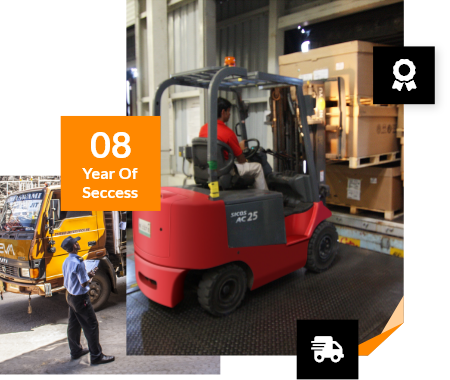1. What Is Logistics and Transportation?
Logistics is the process of planning, implementing, and controlling the movement of goods, services, or information from origin to destination. Transportation, on the other hand, is the physical act of moving these goods.
Think of logistics as the brain and transportation as the legs. One plans, the other moves. Together, they make up the nervous system of global trade.
2. Why Logistics Matter in Everyday Life
Ever grabbed a carton of milk from your fridge without thinking twice? That product took a journey—possibly thousands of miles. From farms to factories to warehouses to stores, logistics is what ensures that your daily needs are met.
Without efficient transportation, businesses would collapse, shelves would be empty, and emergencies would go unmanaged.
3. The Backbone of World Trade
No country is entirely self-sufficient. That’s why global trade is essential—and logistics is the glue that holds it all together. Cargo ships, planes, trains, and trucks carry everything from electronics to clothing across continents.
Imagine a world without logistics. International trade would slow down like a traffic jam without end. That’s how critical it is.
4. Key Features of World Class Logistics
So, what makes logistics world class?
-
Reliability: On-time delivery with minimal errors.
-
Flexibility: Adapting to demand changes or disruptions.
-
Transparency: Real-time tracking and communication.
-
Efficiency: Using the shortest, most cost-effective routes.
-
Safety: Ensuring products and people are secure throughout the journey.
A world class provider offers all these consistently.
5. The Role of Technology in Modern Logistics
Gone are the days of paper-based tracking. Today, logistics rides on the back of cutting-edge tech:
-
GPS and RFID: For real-time location tracking.
-
Automation and robotics: For faster warehouse operations.
-
AI and data analytics: To predict demand and optimize routes.
-
Blockchain: To ensure secure, tamper-proof transactions.
Technology has turned logistics into a smart system—like having a brain in every box.
6. Types of Transportation Services
Transportation isn’t one-size-fits-all. Here are the main types:
-
Road Freight: Trucks for regional and local deliveries.
-
Rail Freight: Best for heavy, long-distance inland cargo.
-
Air Freight: For fast, high-value shipments.
-
Ocean Freight: Economical for large, international loads.
-
Courier Services: Quick, door-to-door parcel deliveries.
-
Multimodal: Combining different methods for best results.
Each has its pros and cons, depending on speed, cost, and cargo type.
7. Choosing the Right Logistics Partner
Not all logistics companies are created equal. Choosing the right one can make or break your business. Look for:
-
Experience in your industry
-
Strong global network
-
Modern tracking systems
-
Customer support and service
-
Proven reliability and efficiency
Your logistics partner should feel like an extension of your own team.
8. Challenges in Global Logistics
Even world-class systems face hurdles:
-
Delays at ports
-
Customs and regulatory issues
-
Political instability
-
Fuel price volatility
-
Natural disasters
Successful logistics companies prepare for these by building resilience into their supply chains.
9. How Logistics Support E-Commerce
Online shopping has exploded. But behind every “Buy Now” click is a flurry of logistical action:
-
Inventory management
-
Packaging
-
Shipping
-
Last-mile delivery
-
Returns processing
For e-commerce to thrive, logistics must be lightning-fast, highly flexible, and incredibly accurate.
10. The Green Movement: Sustainable Logistics
Today’s logistics isn’t just about speed—it’s about sustainability.
-
Electric delivery vehicles
-
Carbon offsetting
-
Eco-friendly packaging
-
Optimized routing to reduce emissions
Think of it like switching from plastic straws to bamboo—but for the entire supply chain.
11. Emergency and Specialized Transportation
Some deliveries can’t wait:
-
Medical supplies
-
Disaster relief goods
-
Hazardous materials
-
Live animals
These require special handling, permits, and protocols. It’s logistics under pressure—and world class companies shine here.
12. The Human Element in Transportation
While automation is rising, humans remain the heart of logistics:
-
Drivers
-
Dispatchers
-
Warehouse workers
-
Customer service reps
Their skill, commitment, and experience are irreplaceable. Behind every shipment is a team that cares.
13. Logistics in the Future: What to Expect
The future looks exciting:
-
Drones for last-mile delivery
-
Self-driving trucks
-
AI-managed smart warehouses
-
Hyperloop cargo systems
Science fiction? Maybe. But steps are already being taken. The future of logistics will be faster, smarter, and greener.
14. Real-Life Examples of Logistics Excellence
Some companies set the gold standard:
-
Amazon: For last-mile delivery and warehouse efficiency.
-
DHL: Known for global reach and tracking transparency.
-
FedEx: Pioneers of overnight shipping.
-
Maersk: Experts in ocean freight and digital transformation.
They didn’t get there overnight—they invested in people, tech, and reliability.
15. Final Thoughts and Key Takeaways
Logistics may not be glamorous, but it touches every part of our lives. Whether you’re a business owner, a consumer, or someone just curious, understanding world class logistics and service transportation gives you a deeper appreciation for how the world stays connected.
Key takeaways:
-
Logistics is essential to everyday life and global trade.
-
Technology is revolutionizing the way goods are moved.
-
Choosing the right logistics partner is vital for success.
-
Sustainability and innovation are shaping the future.
-
Behind every package is a world of planning, effort, and dedication.
FAQs
1. What does world class logistics mean?
It refers to logistics services that consistently deliver top-notch speed, reliability, transparency, and efficiency on a global scale.
2. Why is logistics important in business?
It ensures products are delivered on time and in good condition, which boosts customer satisfaction and profitability.
3. What is last-mile delivery in logistics?
It’s the final step of the delivery process—getting a product from a local hub to the customer’s doorstep.
4. How is technology used in logistics?
From GPS tracking to warehouse robots, technology improves speed, accuracy, and customer visibility in logistics.
5. Can logistics be eco-friendly?
Yes, through electric vehicles, optimized routes, eco packaging, and carbon offset programs, logistics can reduce its environmental impact.


 English
English Dennis
Dennis German
German Chiness
Chiness